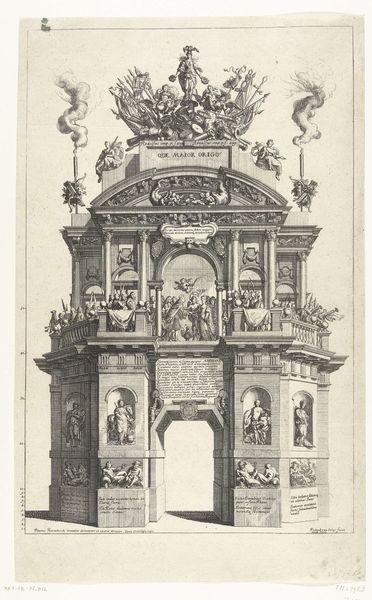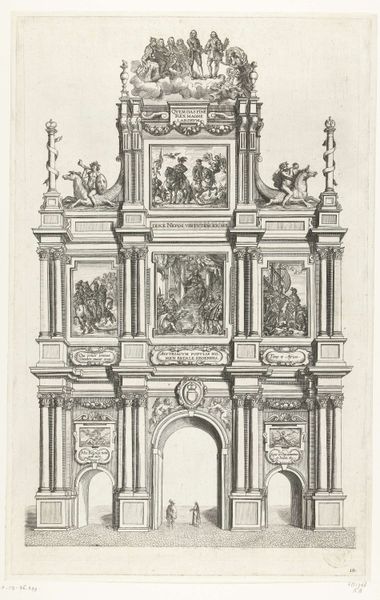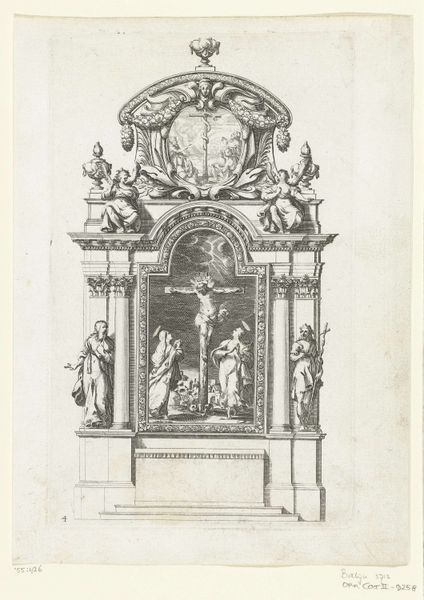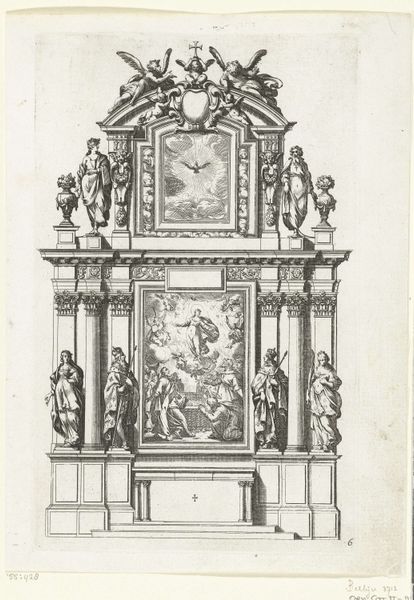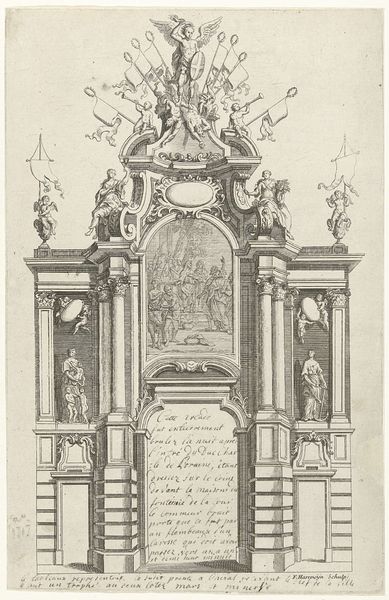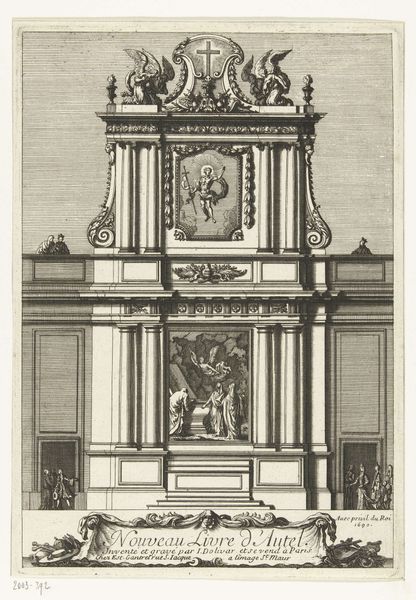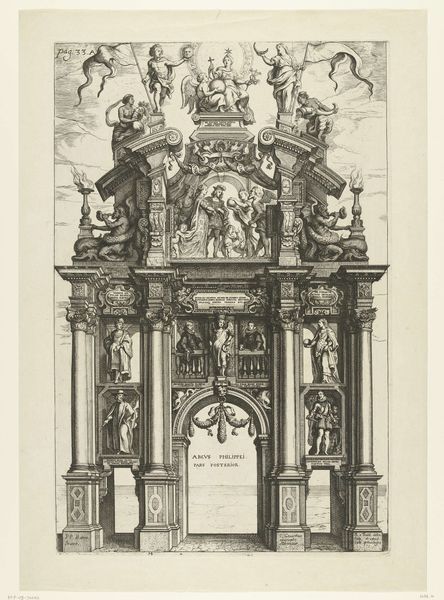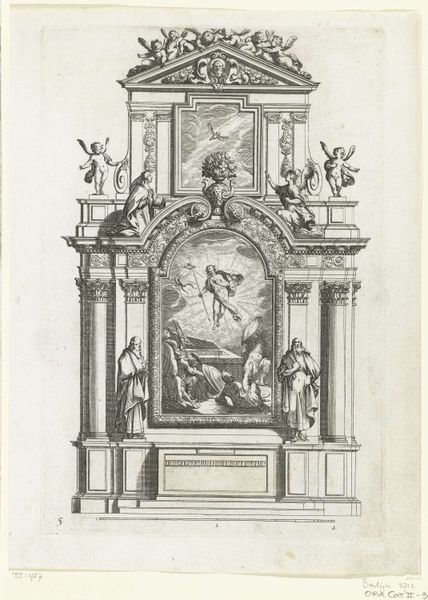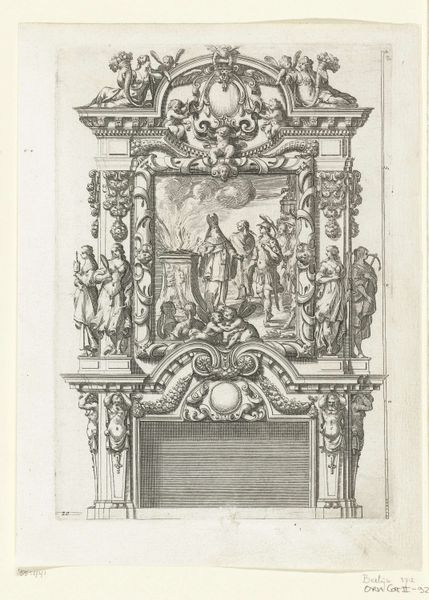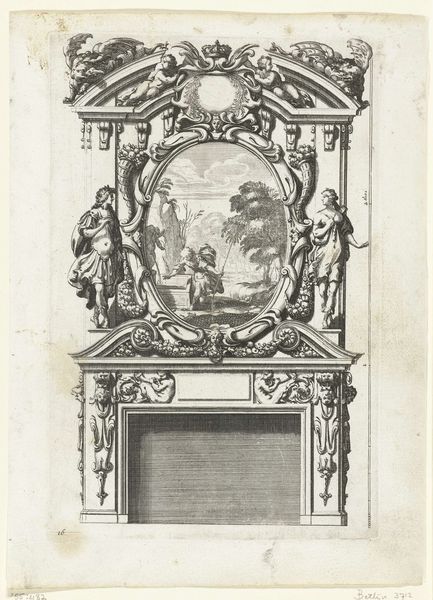
Achterzijde van de triomfpoort Arcus Fernandi op de Vrijdagmarkt; intocht van Ferdinand te Gent in 1635 (nr. 12) 1635 - 1636
0:00
0:00
print, engraving, architecture
#
baroque
# print
#
old engraving style
#
form
#
line
#
cityscape
#
history-painting
#
engraving
#
architecture
#
realism
Dimensions: height 375 mm, width 237 mm
Copyright: Rijks Museum: Open Domain
Curator: Here we have an engraving from 1635-1636, showcasing the reverse side of the triumphal arch erected for Ferdinand's entry into Ghent. The print, created by an anonymous artist, depicts the Arcus Fernandi as it stood in the Vrijdagmarkt. Editor: It's quite imposing, even in this rendered form. I immediately notice the dense detail, almost overflowing with symbolic weight, which I suspect celebrates power but possibly at whose expense? Curator: Absolutely. Arches themselves, throughout history, are deeply connected with power, acting as permanent markers of significant historical events, and this one is no different. Here the arch would've acted as a physical embodiment of royal authority for Ferdinand. It echoes triumphal arches from antiquity—a clear statement linking Ferdinand to a lineage of emperors. Editor: This engraving not only documents the event but, in many ways, participates in creating the mythology around it. The inclusion of imagery with the maritime vessels and warring chariot scenes within the arch feels strategically placed, like a message about territorial conquest. Curator: You've pinpointed a crucial element. Notice how the sculptures, flags, and coat of arms atop the arch visually amplify his might. Consider, too, how these elements communicate messages to a largely illiterate populace—powerful visual cues that reinforced Ferdinand's rule. I suspect even this print of the arch was strategic in communicating Spanish Imperial authority outside of Ghent. Editor: These visual strategies remind us that nothing is neutral. Representation itself is a political act. To me, this image asks: What was Ghent before Ferdinand, and who was displaced – perhaps silenced – by this show of power? I can’t help but wonder about the stories missing from this celebration. Curator: These arches became stages for carefully choreographed displays of power, with figures chosen deliberately to bolster political messages, reinforcing societal hierarchies and maintaining the status quo. Editor: Seeing how effectively this single image worked as both symbol and record, makes me consider the ways celebrations are always a method for reinforcing who is "in" and, therefore, who remains "out." Curator: Indeed, looking closely helps us decode how authority perpetuates its image—and prompts deeper questions about power, representation, and whose narratives are etched into history.
Comments
No comments
Be the first to comment and join the conversation on the ultimate creative platform.

